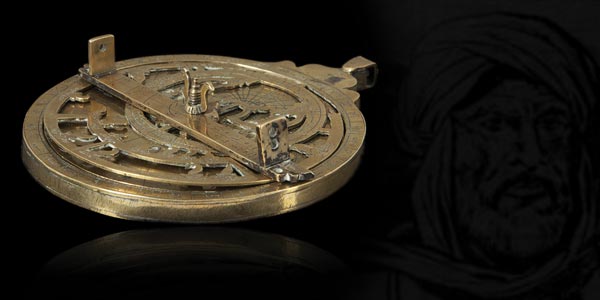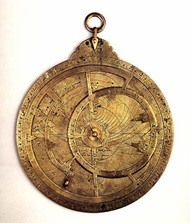Al-Zarqali: Astronomer and Inventor of Clocks

Al-Zarqali, also called Arzachel in the West, was an early Muslim polymath from Spain – an astronomer and engineer – whose discoveries and inventions influenced a number of Islamic and European scientists, like Johannes Kepler and Regiomontanus.
Al-Zarqali was one of the several great scientists produced by Islamic Spain. He advanced the study of astronomy through his extensive observations.
He stated that Planetary Orbits are elliptical and not circular. He was also a mechanical engineer and maker of precision instruments. His public water-clocks and advanced astrolabe have been highly admired.
Abu Ishaq Ibrahim Ibn Yahya al Naqash Al-Zarqali was born in Qurtuba (Cordova) in 420 AH / 1029 CE. In the west, he was known as Arzachel. Al-Zarqali means ‘the blue-eyed.’
He belonged to a family of craftsmen who made several mechanical devices and inherited his family skill. Staying at Qurtuba (Cordoba) until he completed his education, he then moved to Talita (Toledo) where he entered the service of its Sultan al-Ma’mun. His job was to make instruments for the astronomers of al-Ma’mun who were engaged in a major research project on astronomy.
With hard work and by virtue of being highly talented, he soon became the director of the project. He spent a long fruitful year at Toledo, where he conducted extensive observations, made mechanical devices and astronomical instruments, and wrote a number of books.
His water clock of Toledo attracted huge attention. Jewish scholar Moses ben Ezra wrote a poem about it.
Leaving Toledo in 470 AH/ 1078 CE when it was repeatedly attacked by Alfonso VI, Al-Zarqali went to Cordoba where he continued his research.
He died in Cordova in 493 AH/ 1100 CE
Contributions
Al- Zarqali wrote several books on astronomy and astronomical instruments and the most famous of his books is the Toledan Tables.
It deals with various aspects of astronomy, like the determination of the right ascensions, the equation of sun, moon and planets, ascendant, parallax, eclipses, the setting of planets, theory of trepidation, tables of stellar positions, trigonometrical tables etc.
The Toledan Tables was translated into Latin by Gerard of Cremona (d. 1187) and was highly popular in Europe and in the Islamic world.
His other works were also translated into Latin and Hebrew from the twelfth century onwards. In fact, some of his works are preserved in their Latin versions only, the Arabic originals having been lost.
He influenced a number of Islamic and European scientists, like Johannes Kepler and Regiomontanus.
Al-Zarqali stated that the orbits of planets are elliptical (and not circular) five centuries before Kepler (d. 1630). He established that, with reference to stars, the solar apogee is variable.
He determined the longitude of the Regulus; presented improved trigonometrical tables of sines, cosines, versed sines, secants and tangents; calculated the obliquity of the ecliptic at between 13.13” and 13.5”; presented the stereographic projection of the sphere on a plane etc.

Al-Zarqali constructed an advanced version of the astrolabe used in Europe for a long time as Sphaea (from al-Sahifa).
His two public water clocks set up at Toledo evoked great admiration. They consisted of a precise lunar calendar and two vessels which gradually filled while the moon was waxing and emptied as the moon waned.
They were fore-runners of the clocks and planetary calendar machines of the seventeenth century Europe. The clocks were in the use until 1133 when they were dismantled by orders of Alfonso VII to find out their workings but could not be restored.
[http://www.amust.com.au/2018/05/al-zarqali-astronomer-and-inventor-of-clocks/]

